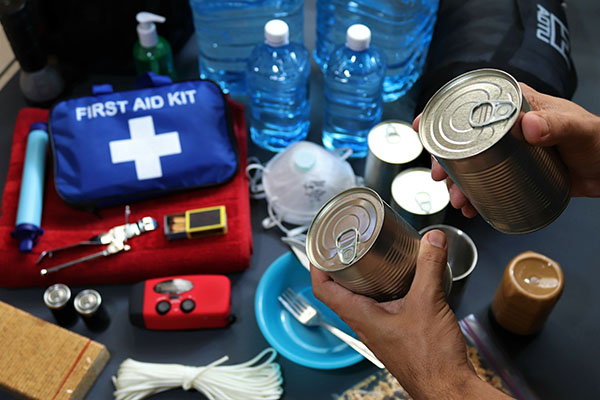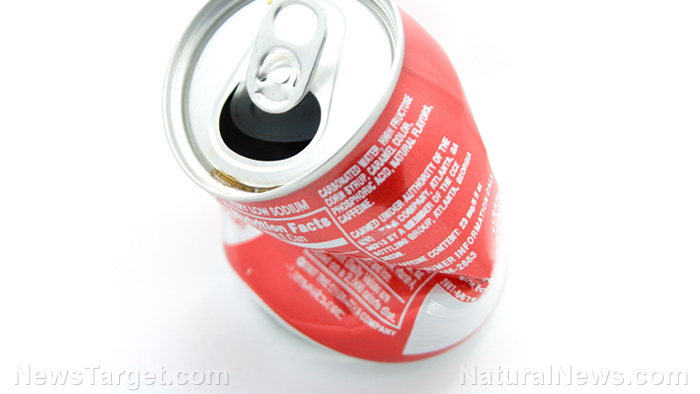Many processed foods contain potentially toxic substances NOT LISTED on ingredient labels
07/22/2024 / By Ethan Huff

You are probably familiar with many of the no-no ingredients in processed foods that are to be avoided at all costs (i.e., synthetic dyes and preservatives), but what about the “invisible” additives that are hiding in foods unlabeled?
Known as “processing aids,” these hidden additives are not labeled because technically they are not part of the food product itself, but are rather residues left over from the food production process.
Common processing aids include additives that “soak and wash” certain ingredients, “filter” beverages like wine and juice to make them appear clearer, and improve the texture of bread products to make them softer and more elastic, among other uses.
“During the production process, these aids are consumed, transformed, or removed, rendering them virtually undetectable in the final product,” warns Flora Zhao from The Epoch Times about the hidden presence of processing aids in processed foods.
In fruit juice, for example, some manufacturers will add enzymes to the juice extraction to produce yields upwards of 90 percent of the fruit’s weight. When heated for a few hours in juice, enzymes like pectinase and amylase liquefy the final product by breaking down cellulase and polysaccharides such as pectin, and more juice and sugars.
“These enzymes improve the flow of the juice in processing containers and enhance its sweetness,” Zhao explains. “They are consumed and transformed during processing, ultimately not appearing on the ingredient label.”
Another processed food containing hidden processing aids is “lactose-free” milk, which contains added lactase to counter the damage caused by pasteurization. Raw milk contains natural enzymes that break down lactose but pasteurized milk does not, which is why many people cannot drink it due to “lactose intolerance.”
“Additionally, applying palm wax to baking molds aids in easy cake release,” Zhao says. “Bottled sauces often have nitrogen added during bottling to displace oxygen, preventing oxidation and product spoilage.”
(Related: Did you know that global food policy is controlled by a handful of multinational corporate food giants that include Coca-Cola, Nestlé and PepsiCo?)
Processing aids aren’t necessarily safe for consumption
So, what exactly are processing aids in official terms? They go by names like clarifying agents, clouding agents, catalysts, flocculants, filter acids and crystallization inhibitors. Their purposes are many, but suffice it to say that processing aids maximize shelf life and ultimately profits for food corporations.
Martin Bucknavage, a senior food safety specialist at Penn State University‘s Department of Food Science, says there are no risks involved with consuming hidden processing aids in foods, but food process engineer Tim Bowser from Oklahoma State University‘s Robert M. Kerr Food and Agricultural Products Center says otherwise.
“There [are] risks in all processes,” Bowser warns. “There [are] definitely potential side effects and negative aspects that need to be looked into.”
The silver lining in all this is that, according to Bowser, food producers are unlikely to use processing aids for deception and adulteration purposes because of the way they function.
“They do not have that ability to cheat,” Bowser says. “The residuals would be too low to detect.”
On the flip side, detection technology is always advancing, so there could come a time when processing aids are able to be detected at the parts per billion (ppb) or even parts per trillion (ppt) level.
Beer is another food product that often contains hidden processing aids, even in places like Germany where they are prohibited. Diatomaceous earth, which is used to filter alcohol and beverages in general, is believed to sometimes be contaminated with arsenic, which could explain why German beers are seeing a gradual increase in its concentration in the final product.
“The use of certain processing aids can increase levels of contaminants in beverages,” a spokesperson from the U.S. Food and Drug Administration (FDA) confirmed.
Learn more about what not to eat and feed your family at JunkFood.news.
Sources for this article include:
Submit a correction >>
Tagged Under:
clean food watch, food additives, Food Evolution, food science, food supply, frankenfood, grocery, ingredients, poison, processing aids, products, stop eating poison, toxins
This article may contain statements that reflect the opinion of the author
RECENT NEWS & ARTICLES
COPYRIGHT © 2017 FOOD SUPPLY NEWS



















